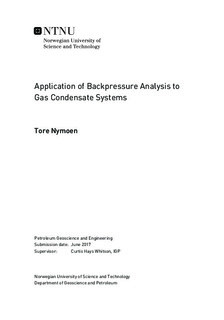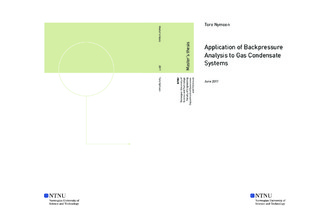| dc.description.abstract | The deliverability of a natural gas well refers to its production capabilities under specific conditions and bottomhole flowing pressures. The deliverability is determined through a multipoint test, where the well is produced under a series of combinations of pressure, rates, and other data as a function of time. Results from these tests are used to generate an Inflow Performance Relationship, which determines the reservoir pressure-rate behavior for a given well. The deliverability equation for a well can be modified to include friction flow effects in tubing and pipeline, such that a single equation determines the entire pressure drop from the reservoir through the pipeline. A plot of pressure drop versus rate is often referred to as a backpressure curve.
As natural gas is produced, the pressure in the near-well region will often drop below the dewpoint pressure. This will result in an accumulation of condensate around the wellbore, and leads to decreased well deliverability. The commingled flow of both gas and liquid phases through the production tubing also increases the pressure drop encountered while lifting the fluids to surface. These effects require changes in the specific modeling of the system compared to flow of dry gas.
Backpressure curves for dry gas and gas condensate fluids have been generated using Excel VBA. By implementing a steady-state reservoir model and a tubing flow model, the pressure-rate behavior of the entire system can be investigated. The tubing flow model is based on the Gray Correlation. In order to acquire physically sound results from the tubing model for a range of production rates, the Gray Correlation is modified. Using the coupled Excel VBA model, three sets of backpressure curves have been generated, allowing for comparison of dry gas curves and gas condensate curves. The sets of curves show differences between backpressure curves for dry gas and for gas condensate. Low pressure gas condensate systems behave fairly equal to dry gas, high pressure gas condensate does not. Traditional backpressure curves can sufficiently describe pressure-rate behavior for low pressure dry gas, but not for high pressure dry gas or gas condensate. Lean and rich gas condensates behave similarly with regards to backpressure curves. | |

